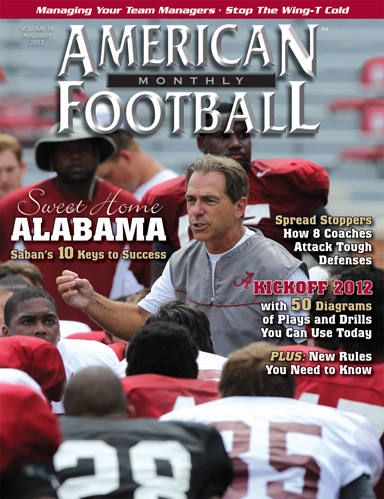AMERICAN FOOTBALL MONTHLY THE #1 RESOURCE FOR FOOTBALL COACHES
|
|
Article Categories
|
Slowing Down the Spreadby: JohnAllen SnyderOffensive Coordinator Pequea Valley High School (PA)© More from this issueWhat do defenses do to slow down the spread and how do offenses counter? AFM asked spread offense coaches, “What defenses give you the most trouble?”
Sparky Woods • Head Coach • Virginia Military Institute
Sparky Woods has been the head coach at VMI for the past four seasons.
Previously, he was head coach at Appalachian State and South Carolina and the OC/QBs Coach at Memphis. Woods was also a position coach at Alabama, Virginia, and Mississippi State. He has been running the spread for 8 years.
AFM: What defense gives your version of the spread the most trouble?
Woods: Well, we really don’t identify a certain defense that gives us a lot of issues. We do what we have to do to put the defense into conflict. Most defenses will take on the mission of stopping the run first and pass secon....The full article can only be seen by subscribers.
Subscribe today!

|
|
|
NOT A SUBSCRIBER?
Subscribe
now to start receiving our monthly magazine PLUS get INSTANT
unlimited access to over 4000 pages of 100 percent football coaching
information, ONLY available at AmericanFootballMonthly.com!
|
|
|
HOME
|
MAGAZINE
|
SUBSCRIBE
|
ONLINE COLUMNISTS
|
COACHING VIDEOS
|
Copyright 2025, AmericanFootballMonthly.com
All Rights Reserved






